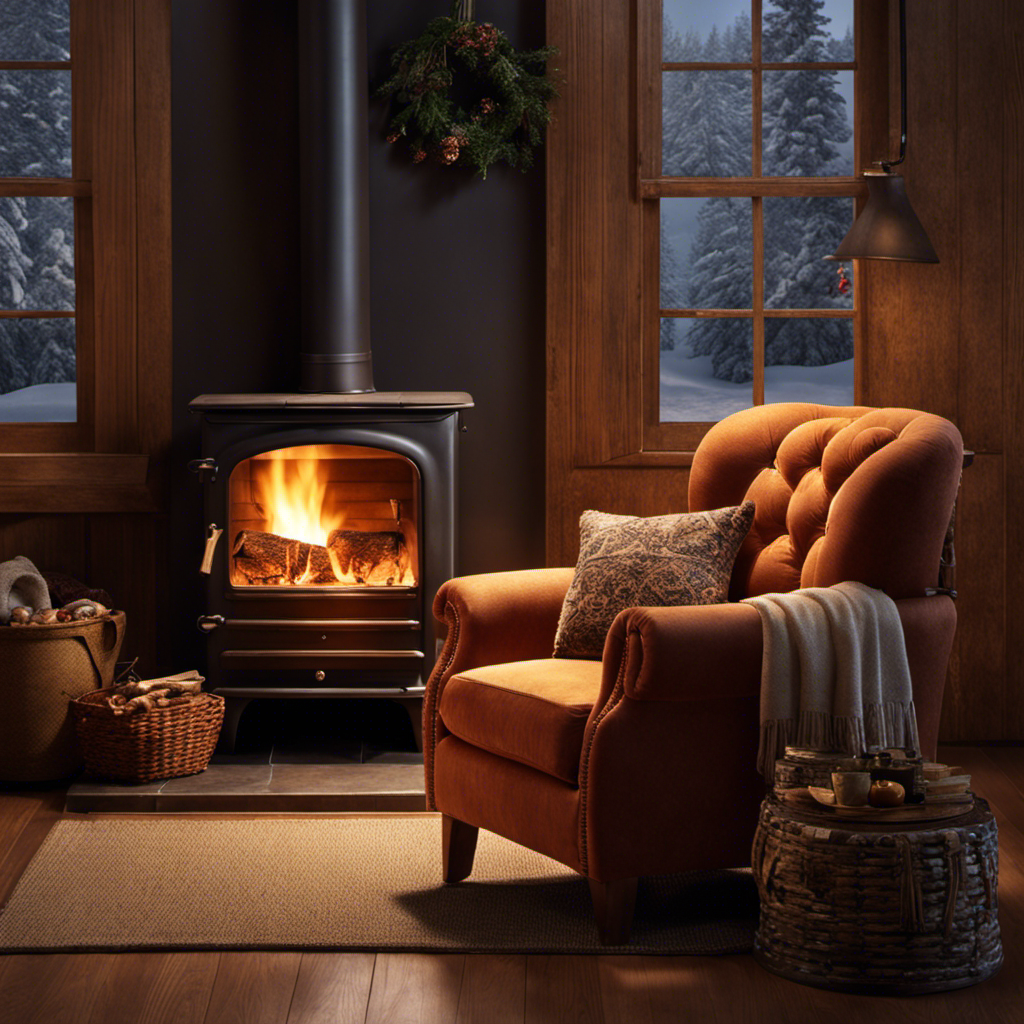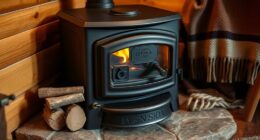- Pros and cons of using regular silicone caulk for sealing a wood stove pipe
- Alternatives to high temperature sealant for wood stove pipe sealing
Did you know that if a wood stove pipe isn’t sealed correctly, it can lead to energy loss and potential health hazards?
In this article, I’ll show you how to effectively seal your wood stove pipe to ensure maximum efficiency and safety.
With just a few simple steps and the right materials, you’ll be able to prevent leaks, reduce heat loss, and maintain a well-functioning wood stove.
So let’s get started and make sure your wood stove is working at its best!
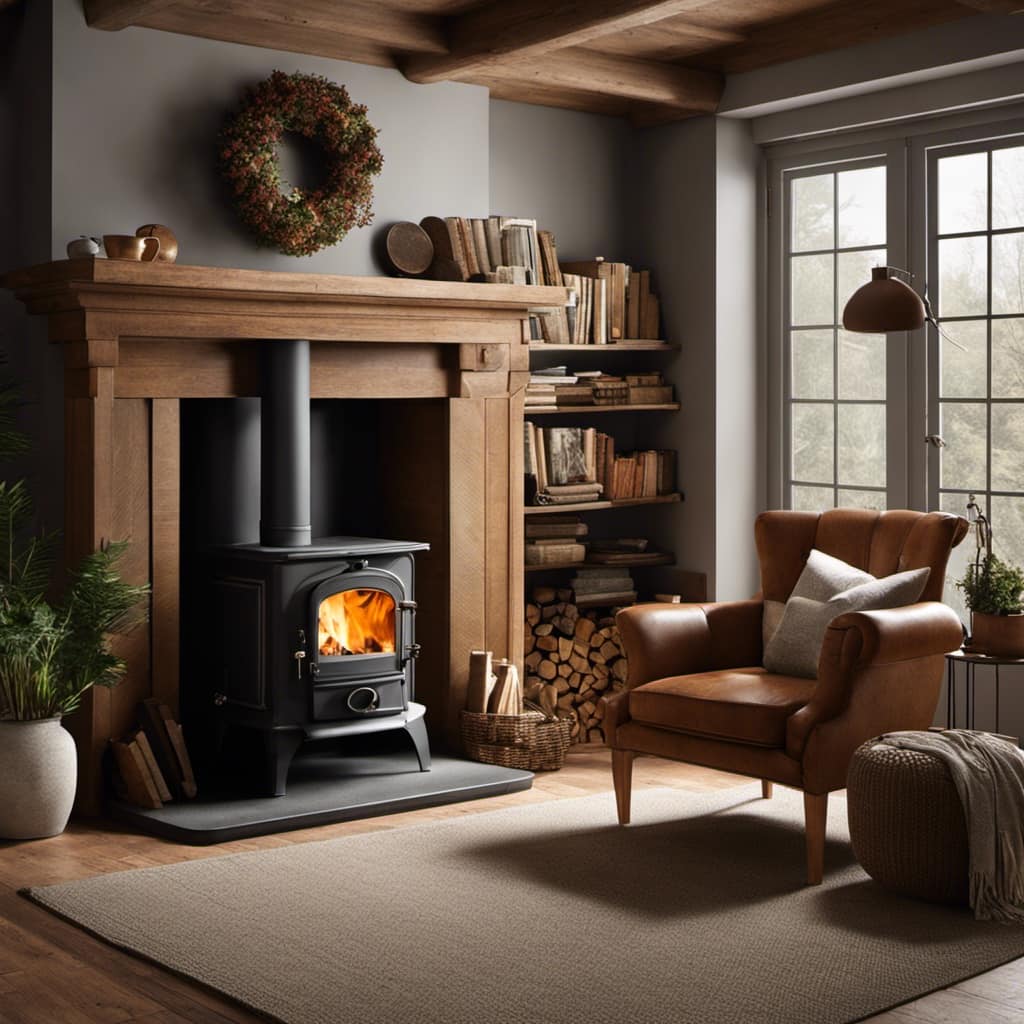
Key Takeaways
- Visual examination of the pipe is essential to identify signs of corrosion, rust, or discoloration, as well as dents or cracks.
- Proper selection of a heat-resistant sealant designed for wood stove pipes is crucial to ensure a secure and long-lasting bond.
- Preparing the pipe by removing debris, cleaning it with mild detergent, and drying it thoroughly is necessary before applying the sealant.
- Regular monitoring of the seal and conducting visual inspections, smoke tests, and addressing maintenance needs promptly are important for safety and efficiency.
Assessing the Condition of the Pipe
I’m currently assessing the condition of the pipe to determine if it needs any repairs. When inspecting for damage, I start by visually examining the entire length of the pipe. I look for any signs of corrosion, such as rust or discoloration, as well as any dents or cracks.
Next, I carefully evaluate potential leaks by running my hand along the pipe, feeling for any irregularities or gaps. I also check the connections between the sections of the pipe to ensure they’re secure and tight.
Additionally, I inspect the pipe for any buildup of soot or creosote, which can indicate a problem with the wood stove’s efficiency.
Gathering the Necessary Materials
Have you gathered all the necessary materials, and can we start sealing the wood stove pipe?
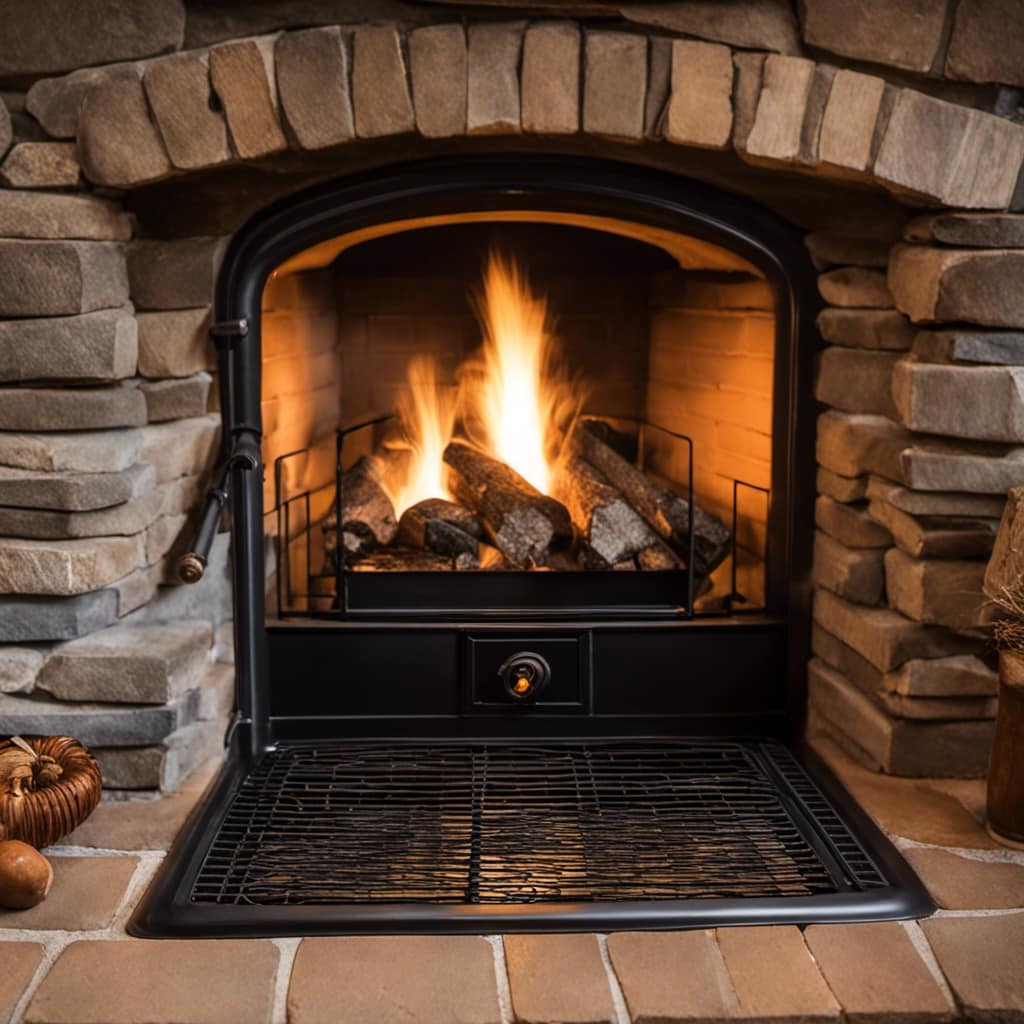
When it comes to sealing a wood stove pipe, it’s crucial to choose the right sealant to ensure maximum effectiveness. The sealant needs to be heat-resistant and capable of withstanding high temperatures. It’s recommended to use a high-temperature silicone sealant specifically designed for wood stove pipes.
Before starting the sealing process, it’s important to take safety precautions. Make sure the stove is completely cool and wear protective gloves and goggles to avoid any potential hazards. Additionally, ensure proper ventilation in the area to prevent the accumulation of harmful fumes.
Now that we’ve gathered all the necessary materials and discussed the safety precautions, let’s move on to preparing the pipe for sealing.
Preparing the Pipe for Sealing
To prepare the pipe for sealing, I’ll need to thoroughly clean and inspect it for any cracks or damage. Cleaning the pipe is essential to ensure a proper seal and prevent any potential leaks or smoke escape. Here’s a step-by-step guide to cleaning the pipe:

- Start by removing any loose debris or soot from the pipe using a wire brush or a vacuum cleaner.
- Next, use a damp cloth or sponge soaked in mild detergent to wipe down the entire surface of the pipe, removing any stubborn stains or buildup.
- Rinse the pipe thoroughly with water to remove any remaining soap residue.
- Finally, dry the pipe completely before proceeding to the next step.
In addition to cleaning, it’s crucial to measure the pipe diameter accurately. This measurement will help you determine the correct size of sealant to use and ensure a snug fit.
Now that the pipe is clean and the diameter is measured, we can move on to applying the high-temperature sealant.
Applying High-Temperature Sealant
Now that the pipe is clean and the diameter is measured, I’ll carefully apply the high-temperature sealant, ensuring a tight seal with the coordinating conjunction of the pipe sections. Choosing the right sealant is crucial to ensure a secure and long-lasting bond.
For wood stove pipes, it’s essential to use a high-temperature sealant specifically designed for this purpose. These sealants can withstand the extreme heat generated by the stove without degrading or releasing harmful fumes.
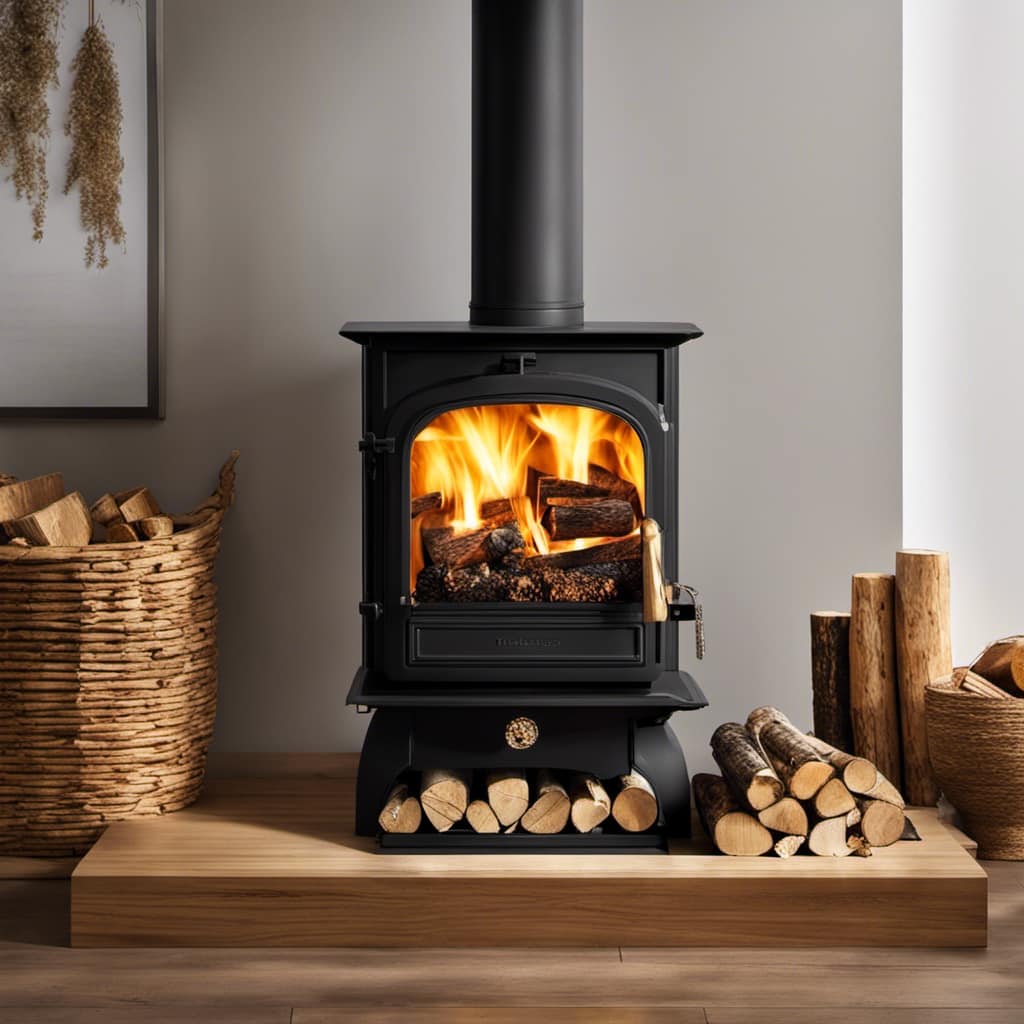
Proper application techniques are equally important. I’ll start by applying a thin layer of sealant to the female end of one pipe section, making sure to cover the entire circumference. Then, I’ll insert the male end of the next pipe section and twist it to create a tight seal. This process will be repeated for each joint in the pipe.
With the sealant applied, it’s time to move on to testing the seal and monitoring for maintenance.
Is Sealing a Wood Stove Pipe Necessary for Durability?
Sealing a wood stove pipe with the most durable wood stove sealant is essential for longevity and safety. The sealant creates a tight bond between the pipe sections, preventing leaks that can lead to heat loss and potential fire hazards. Proper sealing also ensures maximum efficiency and performance of the wood stove.
Testing the Seal and Monitoring for Maintenance
I will carefully inspect the seal and regularly monitor for any signs of maintenance needs. To ensure the seal on a wood stove pipe is secure, there are several testing methods and troubleshooting techniques that can be employed:
Visual Inspection:
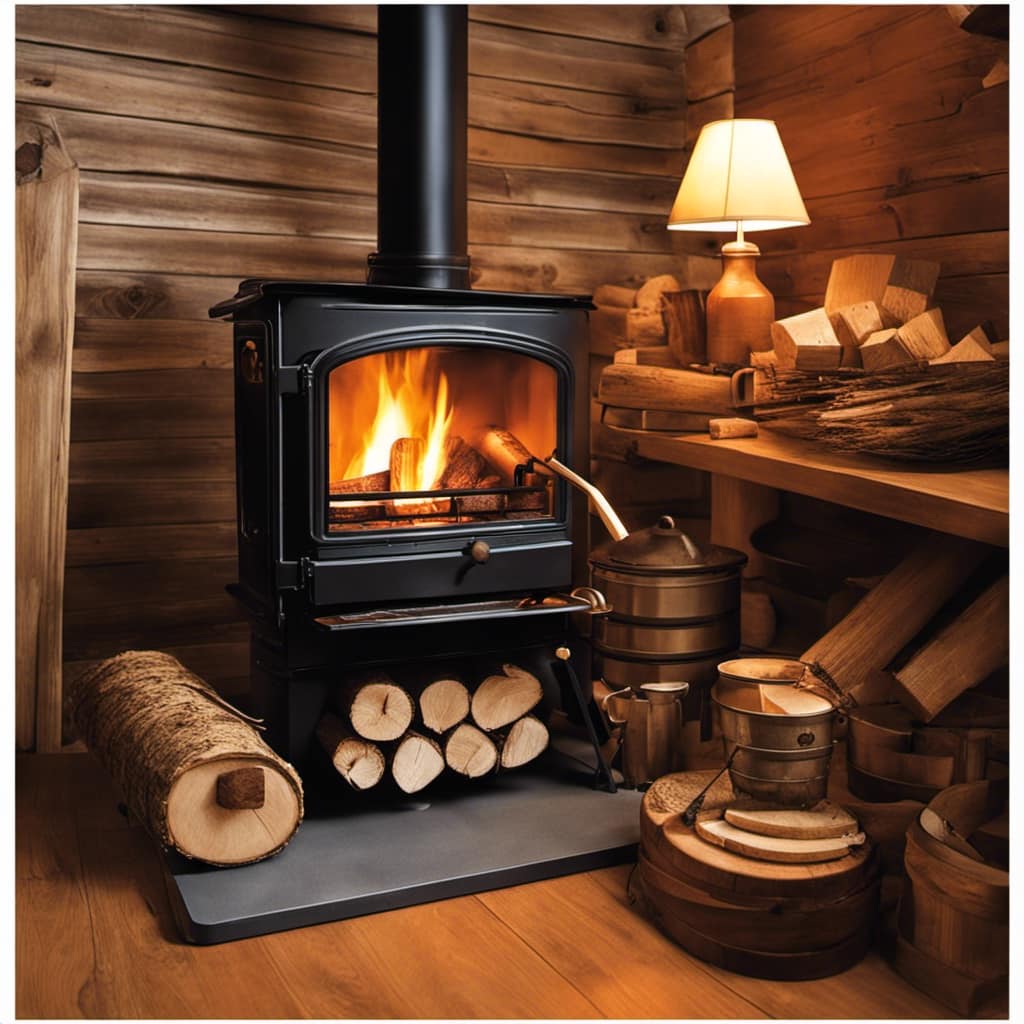
Look for any visible gaps or cracks in the sealant or pipe connections.
Check for signs of discoloration or charring, indicating leaks or excessive heat.
Smoke Testing:
Light a small amount of smoke-producing material near the seal and observe for any smoke escaping.

Use a smoke pencil or incense stick to trace the path of the smoke and identify any leaks.
Regularly monitoring the seal is crucial for maintaining safety and efficiency. By promptly addressing any maintenance needs, such as resealing or replacing damaged parts, potential issues can be mitigated before they become major problems.
Frequently Asked Questions
How Do I Determine the Proper Size of the Wood Stove Pipe for My Stove?
To determine the proper size of the wood stove pipe for my stove, I would use wood stove pipe sizing methods. These methods consider factors such as stove output, chimney height, and clearance requirements.
Can I Use Regular Silicone Caulk Instead of High-Temperature Sealant?
Regular silicone caulk is not recommended for sealing a wood stove pipe due to its low heat resistance. High-temperature sealant is specifically designed to withstand the extreme temperatures of a wood stove. Alternatives include heat-resistant tape or cement.
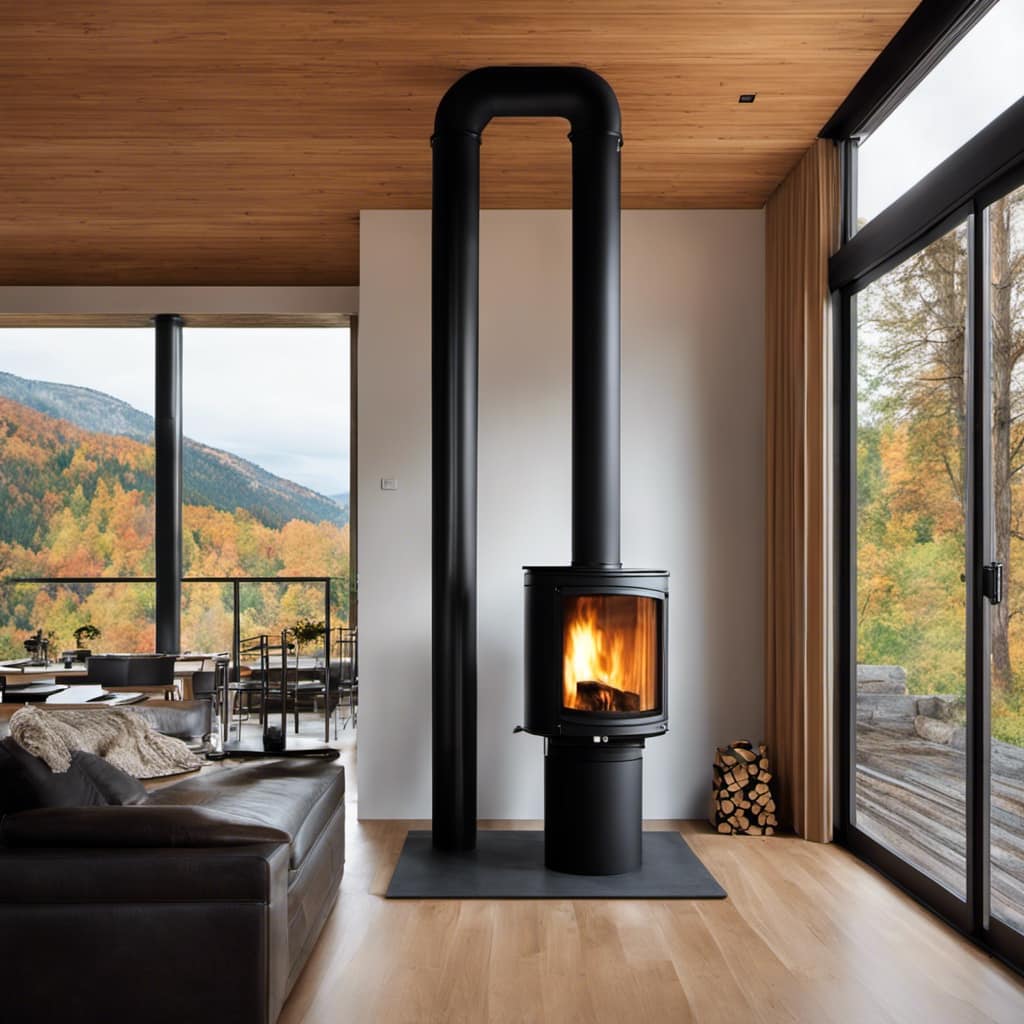
How Often Should I Check the Seal on My Wood Stove Pipe?
I frequently check the seal on my wood stove pipe to ensure it’s secure. It’s important to stay vigilant as common issues like leaks or loose connections can arise.
What Should I Do if the Wood Stove Pipe Is Damaged or Corroded?
If the wood stove pipe is damaged or corroded, I would recommend repairing the pipe and preventing further corrosion. By addressing the issue promptly, you can ensure the safe and efficient operation of your wood stove.
Are There Any Safety Precautions I Should Take When Sealing a Wood Stove Pipe?
When sealing a wood stove pipe, it’s important to take safety precautions. Make sure to wear protective gloves and goggles. The necessary tools include high-temperature silicone caulk and a caulking gun.
Conclusion
Overall, sealing a wood stove pipe is a crucial step in ensuring the safety and efficiency of your wood stove. By assessing the condition of the pipe and gathering the necessary materials, you can prepare the pipe for sealing. Once the pipe is ready, you can apply high-temperature sealant to create a secure and durable seal. Remember to test the seal and monitor for maintenance regularly.
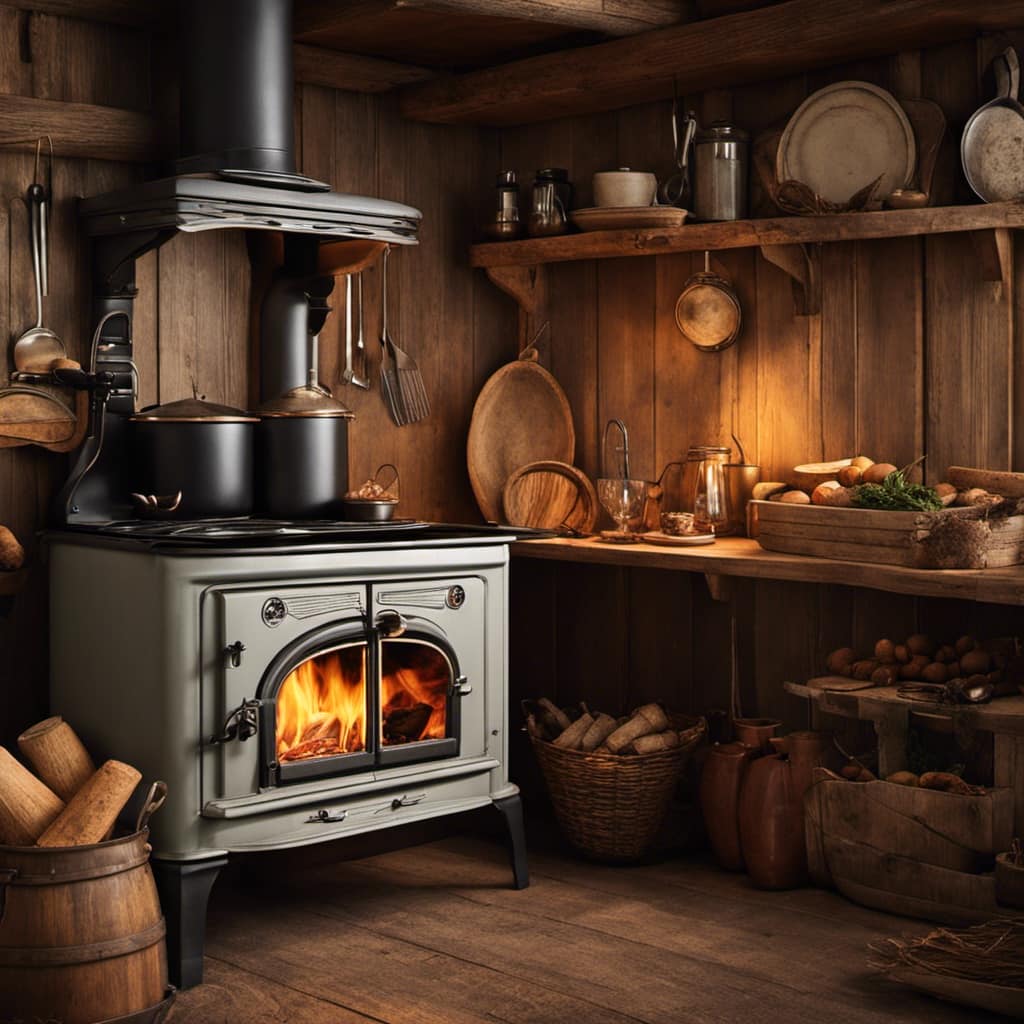
So, why risk potential hazards and inefficiency when you can easily seal your wood stove pipe?
Growing up surrounded by the vast beauty of nature, Sierra was always drawn to the call of the wild. While others sought the comfort of the familiar, she ventured out, embracing the unpredictable and finding stories in the heartbeat of nature.
At the epicenter of every remarkable venture lies a dynamic team—a fusion of diverse talents, visions, and passions. The essence of Best Small Wood Stoves is crafted and refined by such a trio: Sierra, Logan, and Terra. Their collective expertise has transformed the platform into a leading authority on small wood stoves, radiating warmth and knowledge in equal measure.





